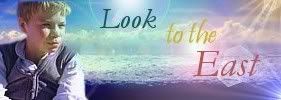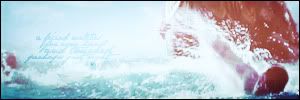Other Passages in The Voyage of the Dawn Treader that Raise Issues for Discussion?
C. S. Lewis and J. R. R. Tolkien were faculty members at Oxford, good friends, and founders of the Inklings—a reading and writing group which met in Lewis’s rooms and at The Eagle and Child, a local pub. They were also the two greatest fantasy writers of the 20th Century.
Although the worlds of Middle-earth and Narnia share many similarities (and the fans of one author are often fans of both), there are some interesting differences between The Lord of the Rings and The Chronicles of Narnia. It has been said that one of the biggest differences is that when readers come to a door in Tolkien’s stories, he typically opens it and shows us what lies behind. By contrast Lewis leaves many doors unopened, allowing readers to wonder what might be on the other side.
For example, when we first see the Stone Table in The Lion, the Witch and the Wardrobe we are told, “It was cut all over with strange lines and figures that might be the letters of an unknown language.” At this point in the story, Tolkien would have given us a picture of the letters themselves, told us how they were pronounced in the original language, provided a translation, and told us who had carved them and who the carver’s parents and grandparents were. Lewis simply suggests there is something special about them by telling us, “They gave you a curious feeling when you looked at them.”
Are there other passages that might make good discussion points? Are there other places in The Voyage of the Dawn Treader where Lewis comes to a door he leaves unopened and in doing so invites us to wonder what might be on the other side? Can you think of other times where Lewis suggests more than he actually states?
Questions for Discussion:
1. Does Lewis give us any hints about who gave the Scrubbs the picture of the Narnian sailing ship?
2. When Lewis places the very modern Scrubbs at Cambridge might he be suggesting something about his rival university?
3. Where might the mountain with the garden and well that Aslan leads Eustace to be located?
4. What might Lewis be hinting at in Lucy’s spell “for refreshment of the spirit” with of “a cup and a sword and a tree and a green hill”?
Still the Webmaster
Still Benevolent
Still a Dictator
Question 1. Eustace says it was someone Alberta didn't want to offend, so an older family member or a person of high social standing makes sense.
However, the picture is not necessarily of a Narnian ship. Lucy says it looks like a Narnian ship. Aslan didn't need someone in our world to have a picture; he could have pulled them through a picture of a chicken doing the hula, if he'd wanted. The point is that the picture looked like something Lu and Ed missed, so they stared at it, and cared when Eustace insulted it.
1. Does Lewis give us any hints about who gave the Scrubbs the picture of the Narnian sailing ship?
Well it was said to be, if I recall, a wedding? present from someone they did not wish to offend, so I would gather it makes complete sense that that particular picture was of interest to Lucy and Edmund (probably they would fall in the company of having the same philosophy as the type of persons the modern Scrubbs wouldn't want to offend). So it makes a lot of sense when Eustace (in his modern philosophy of mind) attacks the frame. Probably too deep of an analysis. 
2. When Lewis places the very modern Scrubbs at Cambridge might he be suggesting something about his rival university?
Maybe that too much modernism, or humanism was not beneficial to a Christian? Not necessarily the college, but modernism/humanism in general, fostering reading of the wrong types of books.
3. Where might the mountain with the garden and well that Aslan leads Eustace to be located?
On subsequent readings it seemed like those locations are representative of different scenes from the Bible where Christ had encounters with his people, i.e. for me these people came to mind.....Moses (mountain), Adam and Eve (lush garden), woman at the well (water=baptism, new birth). At least for me, those were locations where He was making Himself known to these people in different spiritual circumstances and effecting changes in them.
4. What might Lewis be hinting at in Lucy’s spell “for refreshment of the spirit” with of “a cup and a sword and a tree and a green hill”?
Possibly everything that led up to Calvary? Never looked very closely at that bit until now. The cup could symbolize the Lord's Supper. The sword could symbolize the one that pierced Christ's side. The tree could symbolize the cross. And the hill could symbolize where Christ was crucified.

Signature by Ithilwen/Avatar by Djaq
Member of the Will Poulter is Eustace club
Great Transformations-Eustace Scrubb
1. Does Lewis give us any hints about who gave the Scrubbs the picture of the Narnian sailing ship?
Yes, it was someone whom the Scrubbs 'didn't wish to offend', very possibly Lucy's and Edmund's parents. I think that Edmund and Lucy liked the picture because they were already homesick for Narnia, and also because, perversely, Eustace disliked it so much. A ship of any sort represents an escape from unpleasant present day realities.
I think that C.S.Lewis mentioned a wedding present. In those days you got what you got when you got married, even if it was umpteen toasters to plough through. Or a picture that didn't appeal. No fancy lists of expensive 'must-have' items at Myers or David Jones, to be ticked off by those people who are fond enough of Bridezilla and consort to want to shell out on spaghetti makers or other esoteric items the hopeful couple may never use. 
2. When Lewis places the very modern Scrubbs at Cambridge might he be suggesting something about his rival university?
He could very well have been suggesting such a thing, for example about materialism and ethics as well as education, purely to find a way to earn a living. I've visited both Universities which are respected but strange from my Aussie perspective, where on the whole, university attendance tends to be more vocationally oriented than what is the case at either Oxford or Cambridge. Did you know that Oxford escaped bombing during the Blitz because a certain infamous German leader thought he would make the town England's new capital?
Oddly enough both Oxford and Cambridge have Colleges called Magdalen (Maudlin), and C.S.Lewis taught at both Colleges. Cambridge also has colleges called Trinity and Jesus, both attended by sons of Her Majesty Queen Elizabeth II. The family of Charles Darwin, who earned a degree in Theology at Cambridge, founded Darwin College there, not far from Queen's College, and within walking distance from Kings College. Our tour guide pointed out the colleges where scholars found out about breaking the atom and also about the Double Helix (DNA). In other words, if you are into cutting edge science, Cambridge might be a good place to go.
In the immediate post World War II, high schools in places like Australia tended to emphasize science subjects (often monopolised by boys) at the expense of the Arts subjects C.S.Lewis embraced, such as Latin and the study of English, which often were not perceived as leading directly to any sort of job. Latin, in particular, an old Classic standby, was often considered as a useless subject, taking up time better spent on Mathematics, Physics and Chemistry.
I find myself wondering if by any chance C.S.Lewis is commenting in VDT about too much of an adherence to these attitudes when describing Eustace Clarence Scrubb whom he also portrayed later on in the book, as a genuinely good science student. 
3. Where might the mountain with the garden and well that Aslan leads Eustace to be located?
It sounds like Paradise or the Garden of Eden.
4. What might Lewis be hinting at in Lucy’s spell “for refreshment of the spirit” with of “a cup and a sword and a tree and a green hill”?
I expect this is a direct reference to the Gospels of the Bible.
I also thought that the picture could have been the wedding present from Mr. and Mrs. Pevensie which would explain Edmund and Lucy's fondness for it (besides it being very Narnian-looking). 

Signature by Ithilwen/Avatar by Djaq
Member of the Will Poulter is Eustace club
Great Transformations-Eustace Scrubb
1. He says it was a wedding present to Alberta.
2. Possible, but from what a know about Lewis, not likely.
3. I always figured this allegory of baptism was took place on the island.
4. No idea. No idea whatsoever.

signature by Beginte
Although the worlds of Middle-earth and Narnia share many similarities (and the fans of one author are often fans of both), there are some interesting differences between The Lord of the Rings and The Chronicles of Narnia. It has been said that one of the biggest differences is that when readers come to a door in Tolkien’s stories, he typically opens it and shows us what lies behind. By contrast Lewis leaves many doors unopened, allowing readers to wonder what might be on the other side.
Haha, I love the Tolkien/Lewis comparison! A lot of people I've seen have discussions about which author is better than the other. But personally I think that's kind of an impossible thing to decide, because they are going for entirely different styles. One is more short and sweet -- like a childhood dream; and the other is more grown-up, intense, dark, and detailed. I love them both!
1. Does Lewis give us any hints about who gave the Scrubbs the picture of the Narnian sailing ship?
Not that I know of. Probably just some friend or relation of Alberta whom we don't know.
2. When Lewis places the very modern Scrubbs at Cambridge might he be suggesting something about his rival university?
Haha, I never thought of that! Could be... I know he does have a sense of humor. 
3. Where might the mountain with the garden and well that Aslan leads Eustace to be located?
Wasn't it just somewhere on the island?
4. What might Lewis be hinting at in Lucy’s spell “for refreshment of the spirit” with of “a cup and a sword and a tree and a green hill”?
I actually made a thread about that very subject in the Christianity Section here on NarniaWeb! I think it is Aslan telling Lucy the story of Christ's death on the cross. This is her last time in Narnia and she must get to know Him by the Name He has in our world. He says He will be telling her the story all the time in the future. I think each individual image stands for something in the Biblical account of His death. The cup for example -- Christ prays that the father will "take this cup" from him. One of the disciples uses a sword to cut off one of the men's ears. The cross is made from a tree, and I believe it was located on a hill if I'm not mistaken. 
~Riella
~ Riella ![]()


